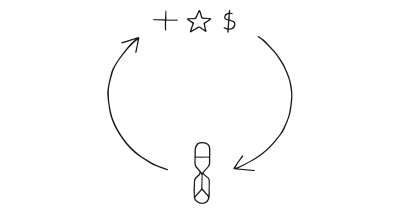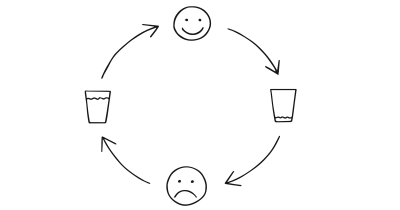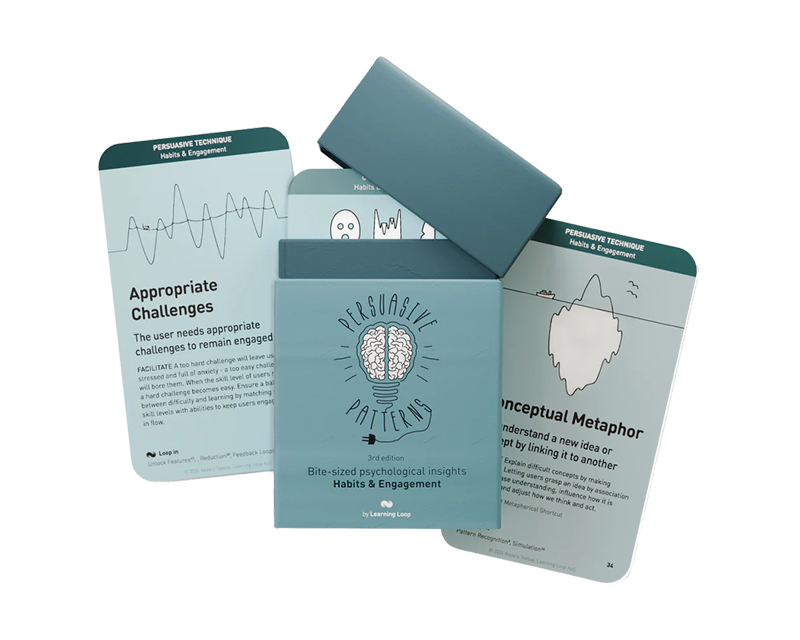
Prolonged Play leverages the intrinsic and extrinsic motivations of users by offering extended playtime as a reward for specific actions or achievements within a game or application. This pattern can help increase the duration a user spends interacting with a product, thereby not only enhancing user experience but also potentially increasing exposure to in-app monetization opportunities or simply further solidifying their investment. By continuously feeding into their desire for achievement and satisfaction, the technique effectively keeps users engaged.
In a local arcade, players earn additional playtime on machines after scoring above a certain threshold. Alex, who visits this arcade, plays a pinball machine for the first time, learning that reaching a score of 10,000 points grants them an extra two minutes of game time. Motivated by this opportunity, Alex focuses intensely on improving his skills, playing more rounds, and ultimately spends more time and money at the arcade than initially planned. This reward of extended playtime for achieving specific scores encourages Alex and others to continue playing beyond his usual limits, increasing their engagement with the games.
Similarly, online platforms can incorporate gamification elements - for instance to teach language skills. The platform could allow users to unlock additional learning modules or bonus content after completing certain tasks or reaching learning milestones. For example, completing a series of grammar exercises might unlock a bonus storytelling module that allows users to apply their new skills in extended practice sessions. This method keeps learners engaged longer, encourages continuous learning, and increases the value they get from the platform.
Both Alex at the arcade and users of the learning platform experience an increase in their engagement through the reward of extended playtime or access, which in turn motivates them to invest more effort and time. In both scenarios, the Prolonged Play pattern effectively uses the allure of additional time with a beloved activity to enhance participation and commitment.
The study
The persuasive power of the “Prolonged Play” pattern is vividly illustrated in the study conducted by Zhang and Yuan (2010), which analyzed player behavior in online games. This study found that rewarding players with extended game time significantly boosted player retention rates. Specifically, the research demonstrated that players who received time extensions as rewards showed a 30% increase in their overall session lengths compared to those who did not receive such rewards. Moreover, these players were also 15% more likely to return to the game regularly, underscoring the effectiveness of prolonged play in enhancing user engagement and loyalty.
Zhang, Y., & Yuan, S. (2010). Prolonged Play in Online Games: The Effect of Rewarding Extensions on Player Retention. Journal of Interactive Marketing, 24(4), 322-335.
The psychological principle underlying the Prolonged Play pattern is rooted in operant conditioning, a theory developed by B.F. Skinner. This principle suggests that behaviors followed by rewards (or reinforcements) are more likely to be repeated. In the context of prolonged play, the reward is additional game time or extended interaction, which reinforces the player’s behavior leading up to the reward. This increased game time not only provides immediate satisfaction but also enhances the likelihood of the behavior being repeated, thus increasing user engagement and retention.
Operant conditioning in prolonged play capitalizes on the concept of positive reinforcement, where the reward directly increases the target behavior. It aligns with the psychological need for achievement and competence, as theorized by Edward Deci and Richard Ryan in their Self-Determination Theory. This theory posits that people are motivated to grow and change by three innate and universal psychological needs: competence, autonomy, and relatedness. By rewarding players with additional game time, you address their competence by acknowledging their skill or achievement, thus enhancing their engagement and motivation to continue playing.
The application of these psychological principles ensures that prolonged play can be an effective method in digital environments to increase not just the quantity of engagement but also the quality, by making the experience intrinsically rewarding.
Historically, the pattern emerged prominently with the rise of video arcade games in the late 1970s and early 1980s, where game mechanics designed to extend playtime through rewards such as extra lives or bonus rounds became standard. These mechanics were directly tied to the arcade’s economic model, which was based on maximizing the duration a player engaged with a machine.
In terms of psychological development, the pattern can be traced back to the early studies on operant conditioning by B.F. Skinner in the 1930s. Skinner’s experiments with rats and pigeons demonstrated that behaviors could be controlled by managing the rewards that follow them. This foundational work paved the way for applying similar principles to human behavior and, eventually, to user engagement strategies in digital games and platforms.
Designing products with Prolonged Play
This pattern is particularly effective in digital environments where engagement directly correlates with success, such as in video games, educational software, and even certain productivity tools.
To successfully apply Prolonged Play, begin by defining clear user goals and milestones within the product. For instance, in an educational app, these milestones could be completing a set of lessons or achieving a certain score on a practice test. Once these goals are established, introduce mechanisms that reward users with additional time or content upon reaching these milestones. This could be extra time to access premium features, additional levels in a game, or unlocked bonus content that enhances the user’s experience.
Blend in rewards seamlessly in respect of the user
Ensure that the rewards offered are perceived as valuable. This alignment means that rewards should directly support the users’ goals. In a language learning application, successful completion of a course module could unlock advanced conversational practice sessions, directly fostering the user’s aim to improve language skills.
Rewards should feel like a natural extension of the user journey. Employ visual cues, such as progress bars or completion meters, to illustrate how close users are to earning their next reward. This not only clarifies the reward system but also maintains motivation by visibly marking progress.
Motivate to reach articulated milestones
When users achieve milestones, give instant and encouraging feedback. Notifications that congratulate users on their progress can significantly enhance motivation and drive further engagement. This feedback should celebrate their achievements and encourage them to continue interacting with your product.
Use Prolonged Play as a motivational tool to encourage specific user actions, such as referrals, social shares, or content creation. For example, extending the number of allowable actions per month or increasing total storage space can serve as incentives for users to engage in behaviors that benefit both them and your platform.
While Prolonged Play is a powerful motivator, it’s essential to balance it with other types of rewards. Incorporate a variety of rewards such as unlocking new features, granting special privileges, or providing power-ups. This variety helps cater to different user preferences and keeps the reward system dynamic and engaging.
Identify the most valuable resources within your system and use these as rewards. For instance, if your platform is a cloud storage service, consider offering additional storage as a reward for user achievements. This approach makes the reward highly relevant and desirable, thereby effectively prolonging user interaction.
While combining Prolonged Play with other engagement strategies, it’s vital to monitor for signs of user fatigue. Offering too much extended playtime can lead to burnout, so it’s important to find the right balance that keeps users interested without overwhelming them.
Also, tailor the integration of Prolonged Play with other patterns to fit different user segments. Customization can make the application of these patterns more relevant and effective for diverse user groups.
Ethical recommendations
Prolonged Play must be approached with a keen awareness of its potential for misuse. While the intention behind extending game time is to enhance user experience and engagement, it can inadvertently lead to negative outcomes if not handled responsibly. One major ethical concern is the risk of fostering addictive behaviors among users. Games and applications that continuously reward users with more playtime can encourage prolonged periods of engagement, which might disrupt daily routines, responsibilities, and overall well-being.
Additionally, the use of this pattern can raise questions about user autonomy. When players are constantly incentivized to keep playing through rewards that extend game time, it can blur the line between choice and compulsion. This raises ethical issues regarding the extent to which the application manipulates user behavior for the benefit of retention metrics rather than the user’s enjoyment or satisfaction.
To address these ethical concerns, designers and developers should consider implementing safeguards such as:
- Setting limits
Introduce mechanisms that allow users to set their own limits on gameplay duration, providing them control over their engagement. - Communicate transparently
Clearly inform users about the potential for high engagement and provide reminders or prompts that encourage breaks or log-offs after extended play. - Balance your design
Ensure that the design does not solely prioritize prolonged play but also focuses on providing a fulfilling and complete experience within a reasonable timeframe.
Real life Prolonged Play examples
Khan Academy
This educational platform offers badges and energy points as users progress through different subjects, effectively using Prolonged Play to motivate learners to extend their study sessions.
Dropbox
The virtual drive for your computer in the sky will add 250 MB to your account for every person you invite who signs up for their service. As you are set up with a fixed space-limit on your drive, 250 MB is a valuable resource to be rewarded with. It prolongs your play by making it possible for you to store more stuff on your dropbox drive.
Zynga Poker
In this online poker game, players receive free chips and game extensions for continuous play or when they return to the game after a break, thus increasing session times and player retention.
Trigger Questions
- Are we providing rewards that genuinely enhance the user's experience or simply prolong it without adding value?
- How do we measure the effectiveness of play extensions in terms of user engagement and satisfaction?
- Do our play extensions encourage positive behavior or could they lead to user fatigue?
- What feedback have we received from users about the pacing and timing of rewards and play extensions?
- How can we balance the frequency and impact of rewards to maintain a challenging yet rewarding experience?
- Are there specific points in the user journey where engagement typically drops that could benefit from strategic play extensions?
Pairings
Prolonged Play + Rewards + Achievements
Pairing Prolonged Play with Rewards and Achievements can enhance the sense of accomplishment as users progress. For instance, unlocking additional game time as a reward for achieving specific milestones can motivate users to continue their journey, reinforcing both persistence and engagement.

Reward users by extending their game time

Use rewards to encourage continuation of wanted behavior

We are engaged by activities in which meaningful achievements are recognized
Prolonged Play + Goal-Gradient Effect
This effect complements Prolonged Play by increasing motivation as users get closer to a goal. As users progress and see they are nearing their target, offering extra playtime can further boost their effort and commitment to reach the end.

Reward users by extending their game time

Our motivation increases as we move closer to a goal
Prolonged Play + Feedback Loops
Integrating Prolonged Play with positive feedback loops, where each session’s completion provides feedback that encourages further play, can create a powerful motivator. This can be especially effective in educational apps where extended playtime could be rewarded after a series of successful learning activities.

Reward users by extending their game time

We are influenced by information that provides clarity on our actions
Prolonged Play + Unlock Features
This pattern can work hand in hand with Prolonged Play by offering new features or content as time-based rewards. This approach not only extends the session length but also keeps the experience fresh and engaging.

Reward users by extending their game time

Reward specific behaviors by enabling new capabilities
Prolonged Play + Framing Effect
By framing additional game time as a scarce or special reward, users perceive extended play as a valuable opportunity. This can make the prolonged play period seem more exclusive and desirable, enhancing engagement.

Reward users by extending their game time

The way a fact is presented greatly alters our judgment and decisions
A brainstorming tool packed with tactics from psychology that will help you build lasting habits, facilitate behavioral commitment, build lasting habits, and understand the human mind. It is presented in a manner easily referenced and used as a brainstorming tool.
Get your deck!- The Art of Game Design - A Book of Lenses by Schell
- The Behavior of Organisms: An Experimental Analysis by Skinner
- Zhang, Y., & Yuan, S. (2010). Prolonged Play in Online Games: The Effect of Rewarding Extensions on Player Retention. Journal of Interactive Marketing, 24(4), 322-335.
- Liu, C., & Lin, S. (2008). The Effects of Promotional Activities on Brand Decision in the Cellular Telephone Industry. Journal of Product & Brand Management, 17(3), 143-153.
- Smith, R. L., & Jones, F. M. (2014). Time Rewards and Social Dynamics in Online Platforms. Journal of Consumer Psychology, 24(2), 201-211.
- Harper, M. G., & Rao, H. (2011). Reward Systems and User Behavior in Online Communities. Electronic Commerce Research, 11(4), 386-402.
- Gneezy, U., & Rustichini, A. (2000). Pay Enough or Don't Pay at All. Quarterly Journal of Economics, 115(3), 791-810.
- Koster, R. (2005). A Theory of Fun for Game Design. Scottsdale, AZ: Paraglyph Press.
- Deci, E. L., Koestner, R., & Ryan, R. M. (1999). A Meta-Analytic Review of Experiments Examining the Effects of Extrinsic Rewards on Intrinsic Motivation. Psychological Bulletin, 125(6), 627-668.

